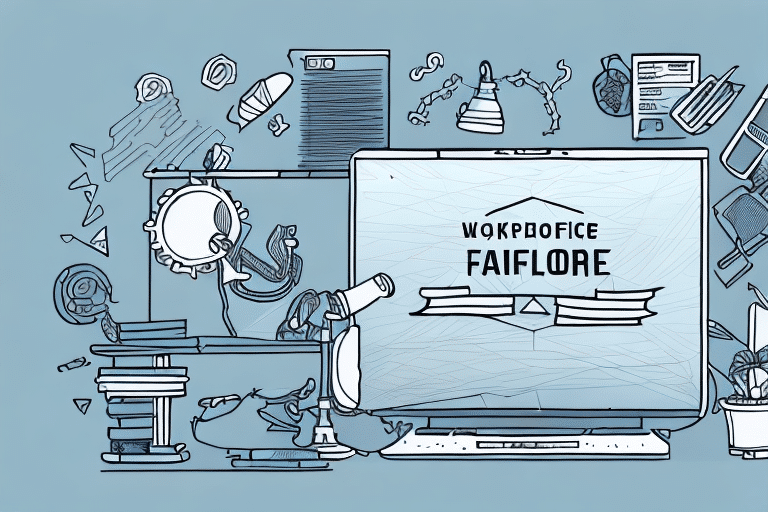Fairness in the Workplace: Why Listening to Your Employees is Key
Employee satisfaction is paramount for any business. A productive and content workforce leads to increased productivity, higher quality work, and decreased employee turnover. According to a Society for Human Resource Management report, companies with high employee satisfaction have 21% higher profitability. But how can employers ensure that their employees are satisfied and feel valued? The answer lies in actively listening to your employees and treating them with fairness and equity. In this article, we will explore the importance of listening to your employees, creating a culture of open communication, recognizing employee contributions, building a strong and cohesive team, and addressing employee concerns in a safe and supportive work environment.
The Importance of Listening to Your Employees
One of the most important factors in creating a happy workforce is actively listening to your employees. When employees feel that their opinions are heard and valued, they are more likely to feel invested in the success of the company and their own career growth. Listening can start with something simple like conducting employee surveys or holding regular one-on-one meetings with staff members. Using this feedback to make positive changes can have profound effects on your business, including increased employee morale and decreased employee turnover. According to Gallup, actively engaged employees are 17% more productive than their peers.
How to Create a Culture of Open Communication in the Workplace
Transparency and honesty in communication are fundamental in creating a culture of open communication. Begin by clearly communicating the company’s values, goals, and expectations to your employees. This establishes a sense of shared purpose and builds trust between employee and employer. It is also imperative to create a space where employees feel comfortable sharing their thoughts and ideas without fear of retaliation or judgment. Creating a safe place for open communication allows employees to share potential solutions to problems within the company and fosters innovation and creativity.
Active Listening Techniques for Managers
Active listening is a necessary skill that managers need to learn to create a culture of open communication. This involves not just hearing what your employees say but also understanding their perspective and empathizing with their point of view. Active listening ensures that employees feel heard, valued, and respected. Managers can demonstrate active listening by paraphrasing what employees say or asking clarifying questions. Additionally, taking notes during meetings or conversations shows that the manager is invested in the employee’s success and progress.
The Benefits of Listening to Your Employees
Actively listening to your employees can have numerous benefits for your business. By listening to their feedback, you can identify areas for improvement and make changes that can increase productivity and efficiency. Additionally, listening to your employees can help you identify potential problems before they become major issues, allowing you to address them proactively. This can save your business time and money in the long run. A Harvard Business Review study found that effective listening behaviors contribute significantly to workplace success.
The Role of Empathy in Active Listening
Empathy is a crucial component of active listening. When managers demonstrate empathy, they show their employees that they care about their concerns and are invested in their success. This can help build trust and foster a positive work environment. Empathy can be demonstrated by acknowledging employees' feelings and concerns, and by showing a willingness to work together to find solutions to problems.
Treating All Employees Fairly and Equally
Treating all employees fairly and with respect is crucial in establishing a positive work culture. This includes avoiding favoritism and unconscious bias. Favoritism can lead to feelings of resentment and inequality between employees. Unconscious bias occurs when managers make judgments based on implicit biases or stereotypes, leading to unfair treatment of some employees. To prevent these issues, managers can establish clear standards for evaluating employee performance and hold all employees to the same expectations.
The Dangers of Favoritism in the Workplace
Favoritism can quickly erode morale and amplify concerns about unfair treatment among employees. It can lead to decreased productivity and employee turnover, disrupting long-term business success. Moreover, it can create a toxic work environment where employees feel disrespected and undervalued. To avoid favoritism, managers can be clear about their expectations upfront and document feedback for all employees.
Tips for Avoiding Unconscious Bias in Employee Management
Unconscious bias is a hidden obstacle to treating employees fairly, and it can happen without managers even realizing it. It can lead to employees feeling undervalued, unappreciated, or discriminated against. Managers can take several steps to avoid unconscious bias. This can include providing training to identify and mitigate potential biases, using objective criteria, and considering a diverse pool of candidates for promotion or hiring decisions.
The Importance of Regular Employee Feedback
Providing regular feedback to employees is an essential part of treating them fairly and equally. It allows managers to identify areas where employees excel and areas where they need improvement. This feedback can help employees grow and develop in their roles, leading to increased job satisfaction and productivity. Additionally, regular feedback can help prevent favoritism by ensuring that all employees receive the same level of attention and support. Managers can schedule regular check-ins with employees to provide feedback and discuss their progress towards goals.
Recognizing and Valuing Employee Contributions
Recognizing employee contributions is an essential aspect of fair treatment of employees. Valuing and rewarding employees for their hard work can lead to increased job satisfaction and employee loyalty. Additionally, recognition and rewards foster a culture of excellence, encouraging employees to go above and beyond their job responsibilities.
The Benefits of Employee Recognition Programs
Employee recognition programs are popular ways of rewarding and recognizing employees for their contributions and work. These programs can boost morale, increase motivation, and improve employee retention. They can take the form of awards, bonuses, promotion opportunities, or simple public recognition within the company. Employee recognition programs not only benefit the employees but also the company as a whole. According to a Gallup study, employees who receive regular recognition are more engaged and have a higher level of productivity.
How to Give Effective Feedback to Employees
Giving feedback to employees can be daunting for managers. However, it is essential for employee development and improving performance. Effective feedback involves being specific and constructive. Managers should avoid general criticism and instead offer specific recommendations for improvement. Furthermore, offering feedback privately can create a more comfortable and safe environment for employees to receive feedback and ask related questions.
The Importance of Regular Employee Performance Reviews
Regular employee performance reviews are crucial for both the employee and the company. These reviews provide an opportunity for managers to give feedback on an employee's performance, set goals for improvement, and discuss career development opportunities. For employees, performance reviews offer a chance to receive constructive feedback, understand their strengths and weaknesses, and identify areas for growth. Regular performance reviews can also help companies identify high-performing employees and provide them with opportunities for advancement within the organization.
Building a Strong and Cohesive Team
Collaboration and teamwork are critical to business success. A cohesive team can work efficiently and produce high-quality results. However, building a strong team involves more than just putting together the best players. It requires a focus on communication, respect, and trust.
Strategies for Fostering Collaboration and Teamwork
Strategies for fostering collaboration and teamwork can include establishing clear goals and roles for team members, encouraging open communication, providing regular feedback, and recognizing and rewarding the team’s accomplishments. Additionally, building relationships outside of the office can enhance teamwork since employees can establish trust, learn to communicate better, and appreciate each other’s strengths.
The Role of Trust in Employee-Manager Relationships
Trust is another important factor in building a cohesive team. Employees need to trust their managers and co-workers to feel invested in the company’s goals. Managers can show trust in their employees by delegating responsibilities, providing autonomy, and offering opportunities for growth. Trust also involves transparency and honesty in communication.
The Importance of Diversity in Team Building
Another crucial aspect of building a strong and cohesive team is diversity. A team with diverse backgrounds, experiences, and perspectives can bring fresh ideas and approaches to problem-solving. It also promotes a culture of inclusivity and respect for different viewpoints. Companies can encourage diversity by actively seeking out candidates from different backgrounds and creating a welcoming and inclusive work environment. According to a McKinsey report, diverse teams are 35% more likely to outperform non-diverse teams.
The Role of Conflict Resolution in Team Building
Conflict is inevitable in any team, but how it is handled can make or break team cohesion. Effective conflict resolution involves active listening, empathy, and a willingness to compromise. It also requires a safe and respectful environment where team members can express their concerns without fear of retaliation. Managers can facilitate conflict resolution by providing training and resources for effective communication and conflict management.
Addressing Employee Concerns and Issues
Despite a manager’s best efforts, workplace concerns and issues are inevitable. Addressing those concerns quickly and respectfully can minimize disruption to workplace morale and productivity. While managers may not always be able to resolve all concerns, appropriately addressing them shows that management is attentive and creates a sense of employee value and respect.
How to Handle Employee Complaints and Grievances
When employees have grievances, it is essential to provide an atmosphere where they feel comfortable sharing these concerns. It is crucial for managers to listen actively, document the conversation, and follow up with appropriate feedback. This fosters trust and respect between employees and management and can help build a positive and safe workplace environment.
Creating a Safe and Supportive Work Environment for All Employees
Creating a safe and supportive work environment is necessary for employee happiness and reduced turnover. This involves establishing clear policies against harassment and discrimination and providing training to management and employees. Moreover, promoting respect and inclusion in the workplace can lead to increased productivity and innovation.
Another important aspect of creating a safe and supportive work environment is providing resources for employees who may be struggling with personal or mental health issues. This can include access to counseling services, mental health days, and flexible work arrangements. By prioritizing employee well-being, managers can create a culture of care and support.
Additionally, it is important for managers to lead by example and model the behavior they want to see in their employees. This means treating all employees with respect and fairness, actively listening to their concerns, and taking action to address any issues that arise. By demonstrating a commitment to creating a positive work environment, managers can inspire their employees to do the same.
Conclusion
In conclusion, actively listening to employees and creating a culture of open communication is key to establishing a fair and equitable workplace. Recognizing employee contributions, building a strong and cohesive team, and addressing employee concerns in a safe and supportive work environment are other essential factors in establishing a happy and content workforce. By focusing on these factors, businesses can establish a strong foundation for success in the long term.
Moreover, providing opportunities for professional development and growth can also contribute to employee satisfaction and retention. Offering training programs, mentorship opportunities, and career advancement paths can help employees feel valued and invested in the company's success. Additionally, promoting work-life balance and offering flexible schedules or remote work options can also improve employee well-being and productivity.
Furthermore, creating a diverse and inclusive workplace is crucial for promoting innovation and creativity. Encouraging diversity in hiring practices, promoting cultural awareness and sensitivity, and providing resources for underrepresented groups can help create a more welcoming and supportive environment for all employees. By prioritizing diversity and inclusion, businesses can also improve their reputation and attract top talent from a variety of backgrounds.




















